Slowing Parnell Rise Highway
We think of it as just an inner-city road but it a defacto highway.
Parnell Rise has become a busy four-lane highway that often sees motorists exceeeding the speed limit.
In fact, Parnell Rd, Parnell Rise, and Beach Rd form a major traffic route for people living in Remuera/Newmarket to get to and from town. Beach Rd for some distance prior to Parnell Rise and Parnell Rd are one lane each. Parnell Rise, however, is notable for being a 4 lane highway.
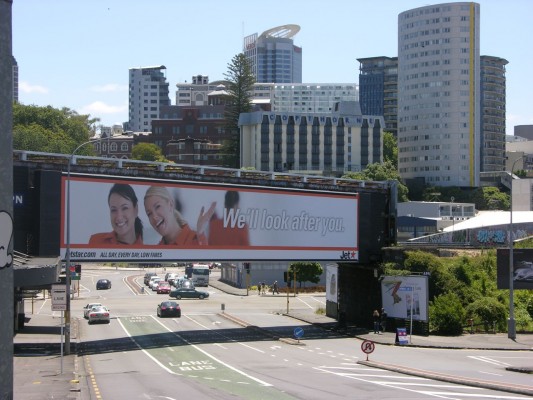 It’s good to see the Waitemata Board initiate a move to solve the problem and I note reader Christopher Dempsey is the one behind the effort to do so. Once again, thanks Christopher.
It’s good to see the Waitemata Board initiate a move to solve the problem and I note reader Christopher Dempsey is the one behind the effort to do so. Once again, thanks Christopher.
This has become more urgent with the development of the big development you may have spotted from the train window as you go over Parnell.
It’s the construction of a new three storey office, commercial and retail development with three floors of underground parking on Parnell Rd, at the intersection with Garfield St and is called Geyser.
The development is substantial, requiring the agglomeration of several large sites, and will add capacity to Parnell’s commercial area, satisfying demand from design industries for sites in Parnell.
Due to what Christopher correctly calls the archaic and nonsensical requirements of the District Plan, 182 parking spaces were required. This will add significant traffic pressure to what is already a congested traffic route.
As a condition of consent, the applicant was required to “… pay to Council, … a financial contribution of $100,000.00 (including GST), … for the development of appropriate traffic management options to address any adverse traffic implications.”
Christopher’s report to the board makes interesting reading on the background to how this came to be a highway.
The highway was created with the removal of trams in the 1950s.
The former Gittos St was remodelled into a highway, taking advantage of the fact that Gittos St was quite wide and flat to begin with. This move was complemented by a change in building lines along Parnell Rd during the 1960s, which was moved back several metres on either side.
This meant that over time the buildings would, as sites were redeveloped, be moved back from the road, enabling the continuation of the 4 lane highway along Parnell Rd.
The net effect is that buildings dating from the 60s to the 80s are set back further from the road than the original buildings dating from a time period earlier.
Christopher’s report continues:
Past regulations and visions have shaped what we find today, particularly on Parnell Rise. With the construction of the 4 lane highway up Parnell Rise, traffic moves as if it is indeed on a highway, notwithstanding that it is 205m long.
Despite a speed limit of 50kph, cars regularly move at speeds higher than this, 70 or 80kph. This is not because people are willingly breaking the law and a cultural norm of driving slowly and with civility, but because the road environment invites people to drive at that speed.
Given such invitation, drivers naturally and unconsciously speed up and down the Rise. Unfortunately, with the introduction of powerful cars, some people deliberately engage in a demonstration of how powerful their cars are, and will speed up or down the Rise to beat traffic in the other lane.
The uphill 2 lane Parnell Rise turns a corner (the corner being engineered for highway speeds) and immediately encounters Parnell Rd, which is one lane. Some 105 metres from this corner lies the new development with its 182 carparks. I hold real fear that outside of congested peak hours, traffic moving at speed up Parnell Rise will encounter traffic wanting to exit the new development, which may not have sufficient speed to exit the site to match the speed of a car coming up Parnell Rise. This will cause accidents.
Going downhill, the one lane Parnell Rd turns that same (highway engineered) corner into a two lane Parnell Rise, and because drivers know that they are entering a highway, they speed up to enter the space. Traffic exiting the new development may not have sufficient speed to match the speed of traffic going downhill towards Parnell Rise.
It is noted that in August last year, a car lost control coming down Parnell Rd during the early hours of the morning (because I suspect the driver knew he or she was entering a highway environment and sped up), and failed to take the corner. Compounding the problem was that the car was stolen and the under-aged teen driver was travelling at speed. The car sped out of control into Fraser Park, before smashing into a Totara. The occupants were seriously injured and taken to hospital.
It is proposed to use the Traffic Management Financial Contribution of the Geyser development towards the remodelling of Parnell Rise. This would see the removal of the 4 lane highway, and replaced with a single lane in each direction, which matches the single lanes of Parnell Rd and Beach Rd. This can easily be done by use of painted chevrons, low concrete medians or other forms of engineering.
The remaining lane would be utilised for cycle lanes with bus lanes or if found not to be necessary, be remodelled into wide footpaths lined with trees and cycle lanes. The essential nature of the works is to re-engineer the road space so that it invites people to travel at a civil speed of 40 – 50kph, thereby decreasing substantially the risk to traffic exiting and entering the Geyser development.
At these speeds, traffic is more able to cope with sudden presentations of risk, enabling safer and more pleasant environments for drivers using this route. This will enable safer, and civil, traffic flows and remove the impact of speeds generated by a nearby highway from the general operation of the Geyser development.
So good to see this move - but will we ever see a change to council’s requirements about encouraging parking spaces.
And the response so far from Auckland Transport has been far off mark. AT says it is currently investigating the idea using signalisation.
Christopher says signals is the wrong idea. “The intention of the motion is to use environmental cues to lower traffic speeds, not simple devices like traffic lights.”
Why must the Auckland solution always be to bung in another set of traffic lights!
For cyclists who use Parnell, it’s also good to see in the board’s agenda that cycle racks will be going up in Parnell and Ponsonby from next month.
Parnell Rd is especially a busy place for cyclists.
A sketch of the proposed bike racks is below - the 900mm is above ground level.
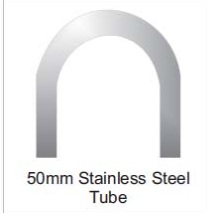 Auckland Transport is also investigating locations on Karangahape Road for a trial of the ‘bike rings’ which are attached to existing poles.
Auckland Transport is also investigating locations on Karangahape Road for a trial of the ‘bike rings’ which are attached to existing poles.
Goodness knows what happened to the call for tenders for a city bike rental scheme in time for the RWC2011. It’s probably in the Auckland Transport’s closed agenda sessions.
The rise in those cycling around Auckland - also increased since petrol price rises - means we can’t wait. We need more cycle racks now.
We’re still waiting for those promised bike racks on buses.
And don’t get my started again about the lack of enough cycle racks at train stations.
Again a great initiative here.

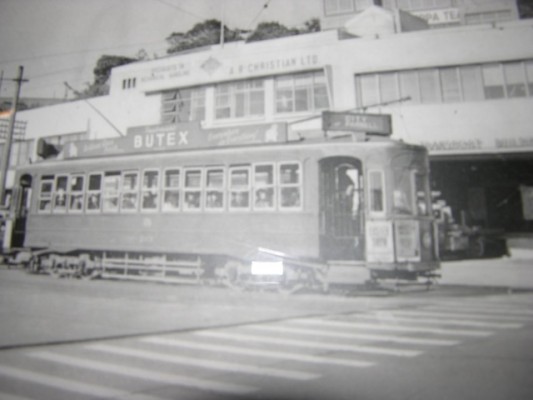
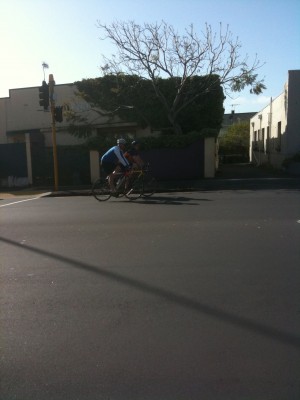
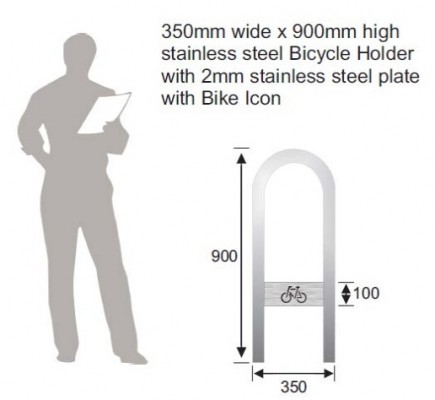










14 Comments
It is ridiculous that innercity developments are being required to provide so much parking, it’s a carry over from the hey day of cars and needs to be removed from district plans ASAP.
Won’t a single downhill lane just result in traffic backed up through the Parnell main street? I’m not sure if that makes Parnell better or worse.
Great work Chris, narrowing this dragstrip will be a huge improvement. It will have the effect of bringing the quality of Parnell down the hill and towards the city. Almost certainly increase the value of the properties on the hill. And Geoff, maybe that will happen but perhaps that may help discourage those taking short trips by car… soon there will be a place to get on the train in Parnell… The car still has too much priority in what is a route to a shopping and residential zone. Walker need some leafy shade here and cyclists more protection.
Minimum car parking is one of the many unaffordable and destructive distortions still on our planning books from the neandertal past. The same place still inhabited by Hide, Joyce et al.
In a month or two, we should be getting the results of the new cycle counts undertaken in March. I am hopeful that they will show another year of massive growth - there’s cycles out everywhere these days.
Also, AT now has a few automatic cycle counters around a few locations on town, so it will be a good way of countering “oh, that’s just a one day survey” criticism.
As for Parnell Rise - go for it! Certainly would be a good location to put in a kerb-separated cycle lane:
http://commons.wikimedia.org/wiki/Category:Kerb-separated_cycle_lanes
FYI the public bike hire scheme was reported back to the Auckland Transport Board on March 30 (in open session- go to http://www.aucklandtransport.govt.nz)
Five expressions of interest were received- with costs ranging from $2m to $4m.
Good to see Christopher on the job here. The expression “self-explaining roads” refers to a trend towards using visual cues (such as reduced carriageway widths) to calm traffic and encourage slower speeds.
Personally I believe the entire inner Auckland area from Parnell to Ponsonby would benefit from this approach and would make a huge difference to the quality of the urban environment there.
I also think the speed limit should be 30 km/h, as it is in many towns in Europe. In Auckland we have a lot of variability. If you drive from Ponsonby to Parnell you can encounter different speed limits on Ponsonby Rd, K-Rd, Grafton Bridge and Domain Drive.
Also, at present you have to do 40 km/h along Ponsonby Rd but if you turn off into one of the little narrow side streets the speed limit increases to 50 - illogical and inconsistent.
It would be great to see Auckland Transport conduct a city-wide review of speed limits plus a major move to self-explaining roads as Christopher has initiated in Parnell Rise.
Thanks for that Wally. Good to hear.
This is dumb as Auckland is already a nightmare to navigate. But every council seems to have one or two who want to make getting about as bigger problem as they can.
I use this route frequently and the last thing it needs is to be grid locked.
He managed to drag a crash from nowhere plus some dubious speeds to support the need to more or less close the road down yet there are frequent crashes elsewhere.
In fact going through the Parnell shops one is lucky to get anywhere need the speed limit much less exceed it.
This is too much of a main arterial (for buses as well) to drag it back into the 19th century pace of life or is it really about keeping the rif raf out?
Please waste the councils money elsewhere and leave this road alone.
I suppose though more or less blocking it off will encourage rail use for those not using their own vehicles.
Kurt we have spent billions of hard to find dollars over the last 60 years as well giving over enormous tracts of valuable land to build an extensive motorway network for the kind of drive you describe. Unfortunately all this has done is promote the idea that every road should have this quality. Parnell is a shopping strip and you should not expect to reach much over 20kph there…. clearly more restrictions are needed as the quality of this place is clearly not sufficiently pedestrian prioritised.
And yes if this makes more people use either the highways for their drive or the rapidly improving RTN networks then that is good.
This is one of those ‘waste land’ areas in Auckland where the introduction of massive roads has choked off any hope of development or use of the space by people outside their cars. Just look at that intersection with Stanley Street that Transit put in there…
We could improve this area and others like it as well as unlocking huge development potential by correcting the road design and size. Go Christopher!
I have shopped, walked and jogged through Parnell at most times of the day and night without any issues caused by traffic.
The problem is every time there is some bright idea to restrict traffic flows on a road for some spurious reason no thought whatsoever is given to where that traffic it displaces is going to go. Hence worse gridlock.
Parnell had shops established on it because it was on a main traffic route. If it were some backwater I doubt it would exist.
A lot of vehicles use Parnell Rd, it connects Newmarket to the CBD and the alternatives are the jammed Khyber Pass, the even more clogged motorway or a long winded route via suburban streets to Tamaki Drive which is bad a lot of the time anyway.
A 20 km/hr speed limit would work if the intent was to get most outsiders to avoid Parnell however.
The reality is in Auckland cars are how we get around and it is quite evident that Auckland’s public transport is not coping as is and 25 minutes from Newmarket to Customs St on the Link bus is none too attractive as it is.
And whilst National is in government with 54% in the polls, for who knows what reason, motor vehicles are the future as well.
dont even have to restrict the area to one lane, traffic calming measures will do the job. Just having foour-lanes open like the top picture makes the road look like a motorway, so people drive at those speeds.
Also roads like that make pedestrians and cyclists feel very unwelcome, hence little foot traffic and no retail.
What awful roads we have in Auckland. Just a wasteland of concrete.
Kurt, are you even aware that we are talking here of the lower part of Parnell Road? None of these changes will restrict flows through Parnell, as long as the intersection at the bottom stays the same size (which it sadly will) - because the top of Parnell isn’t a wide highway either! And as you said, it works there! We are talking about the concrete-fest that is Parnell Rise from Stanley Street to Cracroft Street!
Please don’t fall into this perception that traffic calming automatically means less traffic - all it means is that during peak hours, nothing changes (because traffic is crawling anyway! See Ponsonby Road) and during off-peak hours, when one would normally see people hooning it (because the road says “wide dragstrip here”), the road speeds will be reduced to a more human scale. A scale that is needed if we want to have liable areas for apartment living, for example, which is quite common in lower Parnell.
The problem with too many Aucklanders is that they do not know how it can be different. It can be, thousands of comparable cities worldwide do it.